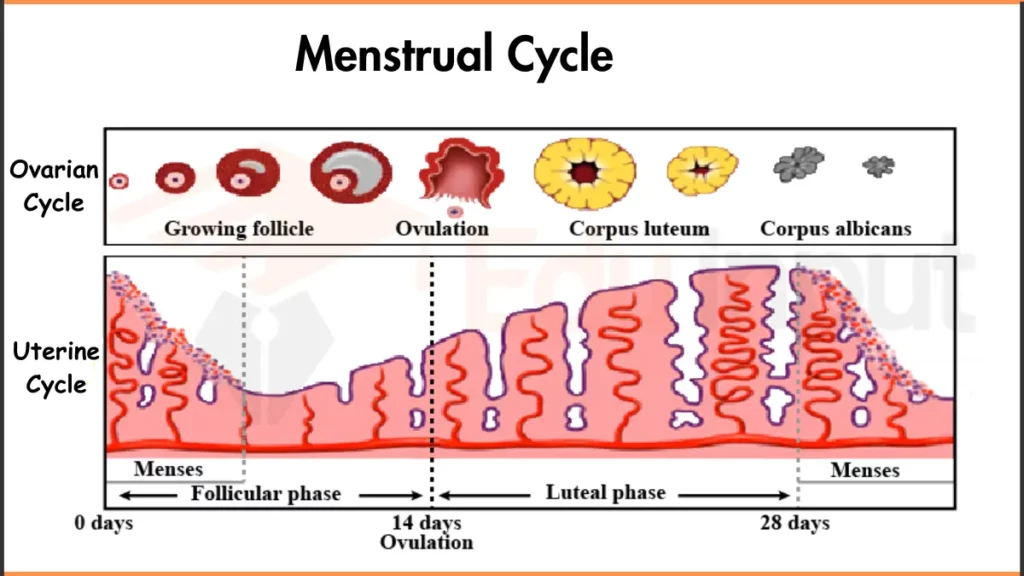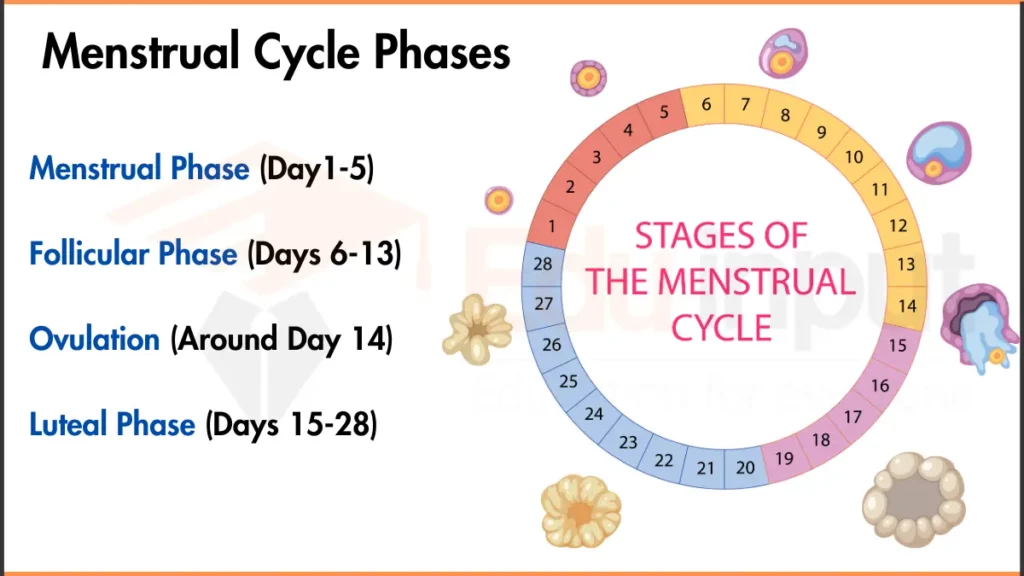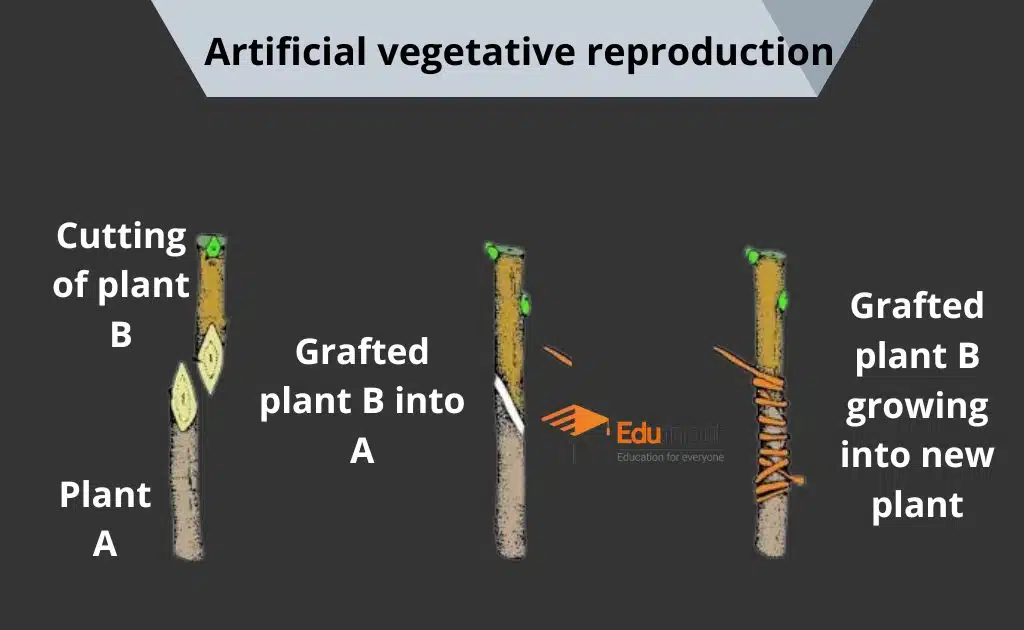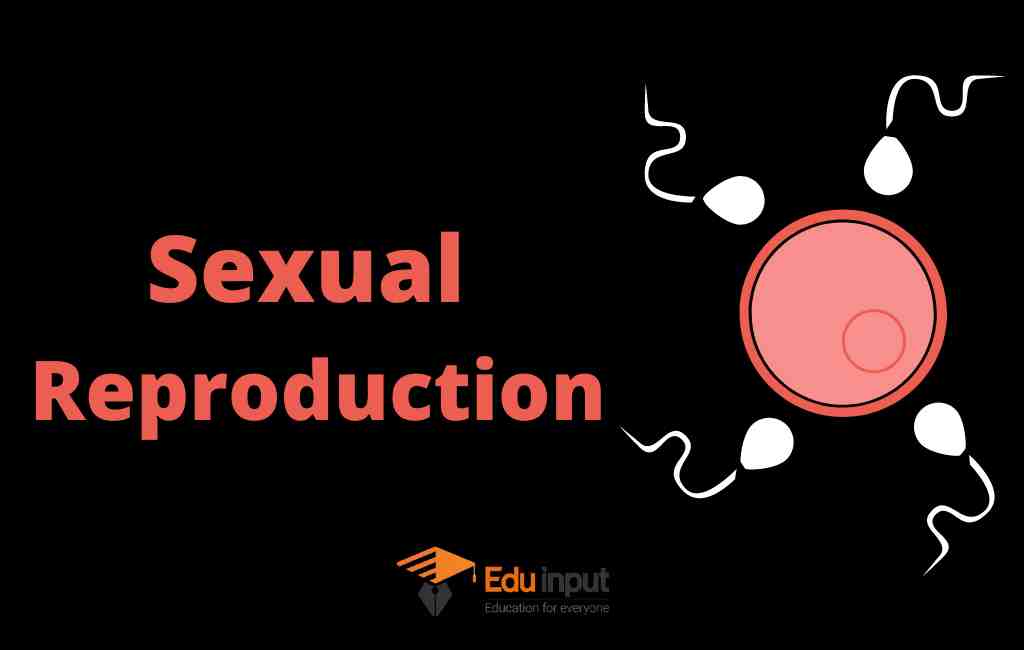What is Menstrual Cycle-Definition, Hormones, and Phases
August 25, 2022
Table of Contents
Menstrual Cycle Definition
The menstrual cycle is a natural, recurring process in the female reproductive system. It involves the lining of the uterus (endometrium) being shed through the vagina, known as a period or menstruation. The cycle is regulated by hormones like estrogen, progesterone, FSH, and LH.

It typically lasts 21-35 days.
Menstrual Cycle Hormones
The menstrual cycle is regulated by following Hormones:
- Estrogen – This hormone is produced by the ovaries and is responsible for thickening the uterine lining in preparation for possible implantation of a fertilized egg.
- Progesterone – This hormone is also produced by the ovaries and helps maintain the thickened uterine lining during the latter half of the menstrual cycle.
- Follicle-Stimulating Hormone (FSH) – Produced by the pituitary gland, FSH stimulates the development of follicles in the ovaries, each of which contains an immature egg.
- Luteinizing Hormone (LH) – Also produced by the pituitary gland, LH triggers the release of the mature egg from the follicle, a process known as ovulation.
Menstrual Cycle Phases
The menstrual cycle has 4 main phases:

1. Menstrual Phase (Days 1-5)
- The uterine lining (endometrium) is shed through the vagina. It results in bleeding that typically lasts 3-7 days.
- Estrogen and progesterone levels are low during this phase.
2. Follicular Phase (Days 6-13)
- Follicle-Stimulating Hormone (FSH) is released by the pituitary gland, stimulating the development of follicles in the ovaries.
- One dominant follicle emerges and begins producing estrogen.
- The endometrium starts thickening in preparation for potential implantation.
3. Ovulation (Around Day 14)
- A surge in Luteinizing Hormone (LH) triggers the release of the mature egg from the dominant follicle.
- This is the most fertile time of the cycle.
4. Luteal Phase (Days 15-28)
- After ovulation, the empty follicle transforms into the corpus luteum, which produces progesterone.
- Progesterone helps maintain the thickened endometrium, preparing it for implantation.
- If implantation does not occur, the corpus luteum degrades, causing progesterone levels to drop.
- This drop in progesterone triggers the shedding of the endometrium, leading to the next menstrual period.
The hormonal interactions between estrogen, progesterone, FSH, and LH regulate the different phases of the menstrual cycle, ensuring proper reproductive function in women.
File Under:






Leave a Reply